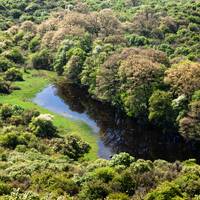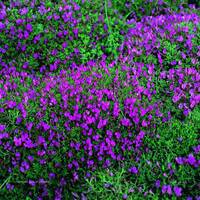s.jpg)
Golestan National Park
Golestan National Park is one of the most important wildlife habitats and national parks of Iran. It was declared as a conservation area in 1336 SH, and following multiple changes of name, it was eventually registered as one of the fifty natural reserves of the world by UNESCO in 1354 SH. And it was registered as a natural heritage of Iran in 1387 SH.
Some of the major roads to Khorasan pass through this forest area, which unfortunately results in accidents and the death of valuable animals that live there.
Being the biggest wildlife park in Iran, Golestan Park includes parts of the provinces of Golestan, North Khorasan, and Semnan. The most of it is spread in Golestan and North Khorasan, while a small part of it is located in Semnan Province.
One of the most unmatched ranges of species of animals live in Golestan Park, of which tigers and brown bears are most important. The others include boars, goitered gazelles, rams, goats, sheep, and wild cats. This park is the habitat of birds such as bearded vulture, golden eagle, common buzzard, and common kestrel. Interestingly, a great number of boars living in this area have grown accustomed to the presence of humans. They are no longer afraid of the people who travel through the forest and even eat foods from their hands.
Some of the natural features of Golestan Park are magnificent Aq Su and Golestan Waterfall, as well as Loveh and Pasang Waterfall.
In terms of geography, Golestan Palace holds different phenomena and has many rivers and high lands. The western side of the park has a moderate and humid subtropical climate, while the southern part is dry and cold. Because of the diversity of the climate, different kinds of trees grow in the park. Most of them belong to broad-leaved species.
Parts of the park that are now open to the public are Golsahan 1 and 2 promenade parks, Glestan Waterfall and the forest site along the main road, and visiting them does not need a license. To visit other parts, however, coordination must be made in advance.

.jpg)
.jpg)
0.jpg)

s.jpg)
.jpg)